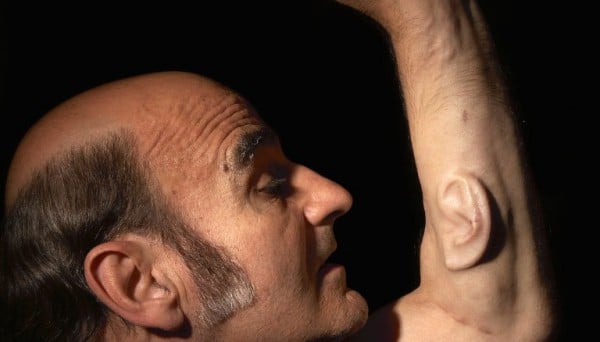Week 8: Nanotechnology and Art
Nanotechnology is a recent new realm of science. Its roots can be traced back to Richard Feynman, one of the engineers of the hydrogen bomb, who said, "There's plenty of room at the bottom." At the time, like Dr. James Gimzewski mentioned in his lecture, Mr. Feynman was not talking about nanotechnology per se, but his words would influence the future of the scientific community.
 |
| Paintings in the Brancacci Chapel |
For years nanotechnology has been at the forefront in art conservation. One well-known example is using nanodroplets to remove oils that accumulate onto the surface of ancient paintings. This nanodroplet cleaning process was first used for the restoration of paintings in Brancacci Chapel in Florence, Italy. The restorers used "hydrocarbon (oil) droplets stabilized in water" to form a sort of coating around the piece, protecting it from further damage caused by slow breakdown of the binders in the paint (referred to as flaking).
| Flamingo by Cris Orfescu |
 |
| One of the pictures submitted to the "Science as Art" contest |
Some groups, like the ETC, are opposed to the use of nanotechnology in the space. One reason for this is that some material commonly used for study has been monopolized by a select few. One popular "blacklisted material" is VantaBlack, the darkest material on Earth. It is produced by the UK Surrey NanoSystems, but Anish Kapoor, a controversial British artist, has an exclusive licensing agreement with the company. This is why the future of nanoart faces many challenges, but if it succeeds, the world will inevitably see breakthroughs in both art and science.
| VantaBlack |
References
Lilley, Maiken. "The Art of Nanotech". NOVA. WGBH, 19 Nov 2010. Web. 26 May 2019.
Gimzewski, James, narr. “NanoTech Art Lectures I-VI.” N.p., Web. 26 May 2019.
Feder, Barnaby J. “The Art of Nanotech.” The New York Times, The New York Times, 25 Jan. 2008, bits.blogs.nytimes.com/2008/01/25/the-art-of-nanotech/?mtrref=www.google.com&gwh=21202CE399CB50C8A794A899706E0B7C&gwt=pay.
O'Brien, Nathan. “Nanotechnology and Nanomaterials; Where Science Meets Art.” Nano News, 18 Apr. 2017, blogs.flinders.edu.au/nano-news/2017/04/18/nanotechnology-and-nanomaterials-where-science-meets-art/.
“Art Conservation and Nanotechnology: A Wonderful Confluence of Arts and Sciences.” Sustainable Nano, 12 May 2017, sustainable-nano.com/2017/05/12/art-conservation-and-nanotechnology/.
Feder, Barnaby J. “New Economy; Nanotechnology Has Arrived; a Serious Opposition Is Forming.” The New York Times, The New York Times, 19 Aug. 2002, www.nytimes.com/2002/08/19/business/new-economy-nanotechnology-has-arrived-a-serious-opposition-is-forming.html?mtrref=www.google.com&gwh=1A606EF1C99988E857B6D81288BF0C18&gwt=pay.
Flinders University. VantaBlack Applied to Aluminum Foil. Photograph. 2017. https://blogs.flinders.edu.au/nano-news/2017/04/18/nanotechnology-and-nanomaterials-where-science-meets-art/
Saliko, Jusef. Picture of the Brancacci Chapel. Photograph. 2014. http://sustainable-nano.com/2017/05/12/art-conservation-and-nanotechnology/
Orfescu, Cris. Flamingo. Photograph. 2012. http://www.nanotech-now.com/Art_Gallery/Cris-Orfescu.htm
Materials Research Society Group. Stem. Photograph. 2013. https://www.pbs.org/wgbh/nova/tech/art-nanotech.html











